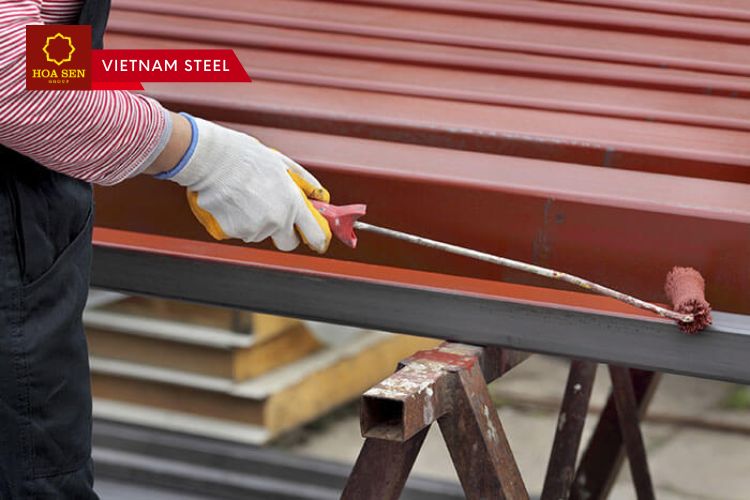Customers frequently inquire about the superior option between Galvanized Steel vs Stainless Steel. They often seek clarification regarding factors such as cost and durability against environmental elements. However, it is important to note that neither type of steel can be universally deemed superior in all circumstances. To assist you in making informed decisions, here is a fundamental overview of Galvanized Steel vs Stainless Steel.
What is Galvanized Steel?
Galvanized Steel undergoes a process where it is coated with a thin layer of zinc, providing effective protection against rust. This makes it a popular choice for manufacturing nuts, bolts, screws, and nails that need to withstand adverse weather conditions.
Galvanized steel exhibits excellent resistance to water, with the exception of saltwater environments. Welders working with structural steel can handle galvanized steel, but precautionary measures must be taken to avoid inhaling the fumes produced during the welding process.
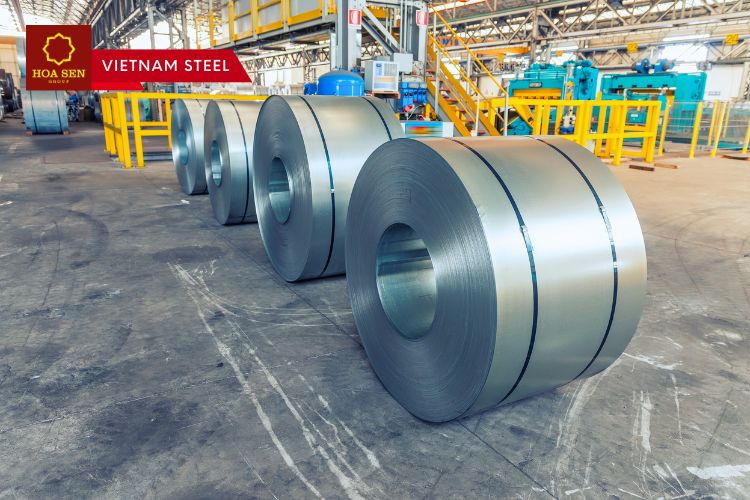
What is Stainless Steel?
Stainless steel is created by incorporating chromium into molten steel, resulting in exceptional strength and resistance to rust, even in the presence of water, including saltwater. Welding stainless steel requires specialized skills, with welders needing precise control over the heating and cooling process. Additionally, they must carefully match filler materials with the specific type of stainless steel being welded.
Engineers and architects should be aware of the distinctions among various types of stainless steel. Austenitic stainless steel is commonly utilized in machine shops, while ferritic stainless steel, being more cost-effective, is often employed in easily replaceable applications like automobile exhaust pipes. Martensitic steel is favored for its durability and is commonly used for hard-facing purposes.
Duplex stainless steel combines the molecular structures of austenitic and ferritic stainless steel, but its workability is more challenging. Precipitation-hardening stainless steel, frequently utilized in aerospace applications, incorporates rare metals such as niobium to achieve even greater strength. Generally, the complexity of the alloy corresponds to increased strength, higher costs, and greater labor requirements.
In general, galvanized steel is more malleable and easier to work with compared to stainless steel. However, stainless steel surpasses galvanized steel in terms of strength and corrosion resistance.
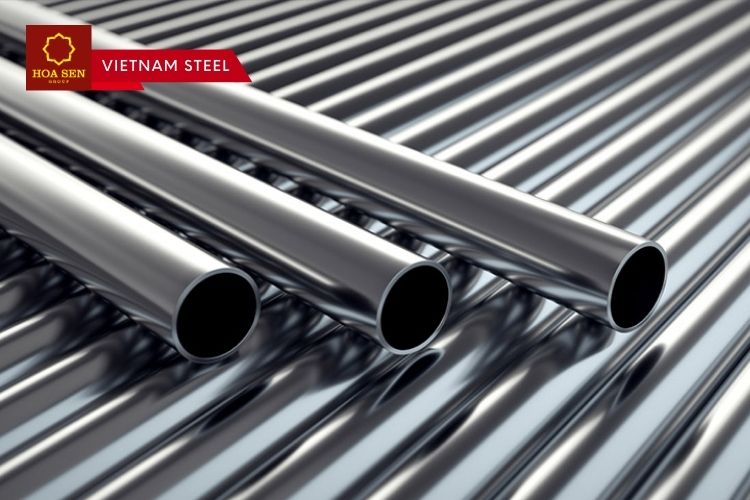
Corrosion Resistance Compared: Galvanized Steel vs Stainless Steel
The corrosion resistance of galvanized steel vs stainless steel varies significantly due to their distinct characteristics and protective mechanisms.
Stainless steel, including galvanized steel vs stainless steel, exhibits resistance to corrosion thanks to the incorporation of chromium (and occasionally other elements). In the case of carbon steel, corrosion occurs when iron reacts with oxygen present in the surrounding environment.
However, the introduction of chromium in stainless steel facilitates the formation of a passive layer of chromium oxide. This layer combines with oxygen, effectively preventing the formation of iron oxide (commonly known as rust) in numerous situations. The degree of effectiveness of this protective layer is directly influenced by the chromium content in the steel.
The different grades of stainless steel, including galvanized steel vs stainless steel, are categorized based on the required amounts of chromium and other alloying elements, indicating their varying levels of corrosion resistance.
Galvanized steel, as compared to stainless steel, resists corrosion through a zinc coating applied to the carbon steel surface. The zinc layer serves two vital purposes in this context. Firstly, it acts as a physical barrier, impeding direct contact between oxygen and the steel surface, thereby reducing the probability of corrosion.
Secondly, even if the zinc coating suffers minor damage and exposes small portions of iron, the surrounding zinc on the remaining coating is more reactive than the steel. Consequently, the zinc exhibits a higher affinity for attracting oxygen molecules than iron, effectively thwarting the formation of rust on the steel.
When assessing the corrosion resistance of galvanized steel vs stainless steel, it is crucial to consider their distinct properties and protective mechanisms. This understanding helps in determining the most suitable option for various environmental conditions and applications.
The Difference Between Galvanized Steel vs Stainless Steel
When comparing the corrosion-resistant properties of galvanized steel vs stainless steel, it is generally observed that stainless steel outperforms galvanized steel. Stainless steel usually possesses superior resistance to corrosion. Even if the surface of stainless steel becomes scratched or damaged, it can still maintain its corrosion resistance around the affected area.
In contrast, if the protective zinc layer of galvanized steel is compromised or damaged, it exposes the underlying carbon steel, leaving it vulnerable to corrosion. This vulnerability is particularly evident in galvanized steel, as it is commonly produced by dipping large sheets of steel into zinc and subsequently cutting them to size. The exposed edges created during the cutting process become potential entry points for rust formation.
In addition to its enhanced corrosion resistance, stainless steel is also generally considered to be more aesthetically pleasing compared to galvanized steel. Stainless steel, including galvanized steel vs stainless steel, typically exhibits a shiny, silver-like color, adding a touch of elegance to various applications.
On the other hand, galvanized steel often has a dull, grey appearance. However, it is worth noting that the improved aesthetic appeal of stainless steel often comes at a higher cost compared to galvanized steel.
In summary, when considering galvanized steel vs stainless steel, stainless steel offers better corrosion resistance, maintaining its protective properties even in the presence of surface damage. It also boasts a more visually appealing appearance compared to galvanized steel.
However, it is important to acknowledge that stainless steel typically comes at a higher price point compared to galvanized steel. These factors should be carefully evaluated when selecting the most suitable material for a specific application.
Read More: What is Galvanized Steel? The Galvanized Steel Manufacturing Process
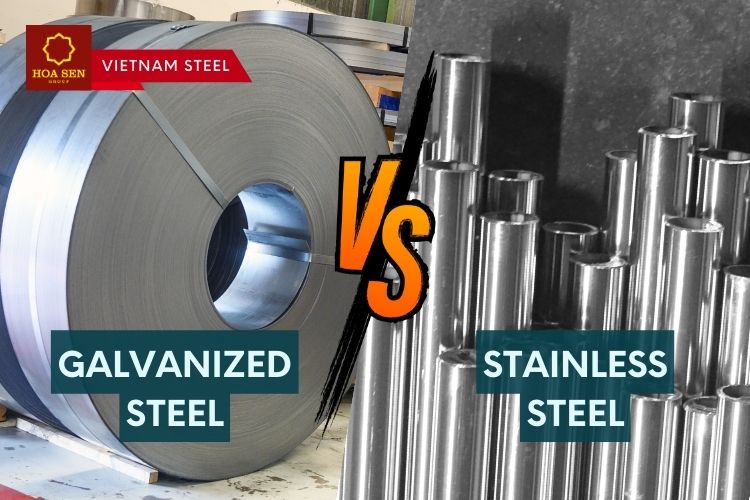
Applications of Galvanized Steel vs Stainless Steel
Stainless steel finds widespread application in various industries where the risk of corrosion is a critical concern and cannot be tolerated. The exceptional corrosion-resistant properties of stainless steel make it an ideal choice for the following areas of use:
- Food processing equipment: Stainless steel is extensively employed in the food industry due to its hygienic properties, resistance to chemical exposure, and ease of cleaning. It is commonly utilized for equipment such as storage tanks, conveyors, mixers, and processing vessels.
- Pharmaceutical manufacturing equipment: Stainless steel is widely utilized in pharmaceutical manufacturing processes due to its ability to withstand harsh chemical environments and maintain the integrity of the product. It is commonly used in equipment like reactors, storage containers, and piping systems.
- Aerospace engine components: The aerospace industry demands materials with exceptional resistance to corrosion, high-temperature stability, and strength. Stainless steel is utilized in critical engine components such as turbine blades, exhaust systems, and structural elements due to its excellent mechanical properties and resistance to oxidation.
- Kitchen appliances: Stainless steel is a popular choice for kitchen appliances due to its durability, ease of cleaning, and aesthetic appeal. It is commonly used for refrigerators, ovens, sinks, countertops, and range hoods.
- Certain types of fasteners: Stainless steel fasteners, such as bolts, screws, and nuts, are utilized in applications where corrosion resistance is vital, such as outdoor structures, marine environments, and automotive components. The use of stainless steel fasteners ensures longevity and reliability in such challenging conditions.
- Overall, stainless steel's corrosion resistance and durability make it a preferred material in industries where maintaining product integrity, hygiene, and longevity are essential. Its applications range from critical sectors like food processing and pharmaceuticals to aerospace and everyday items like kitchen appliances.
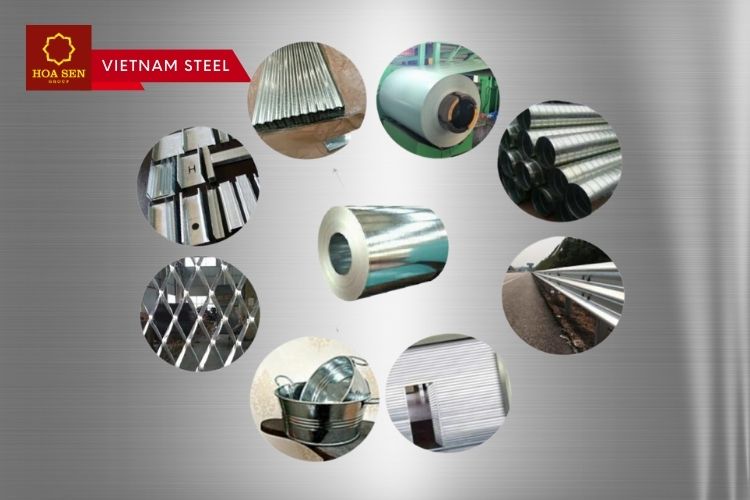
Galvanized steel finds extensive application in various industries where corrosion resistance is essential, although aesthetic considerations may be of lesser importance. The following are examples of applications where galvanized steel is commonly utilized:
- Ductwork: Galvanized steel is widely employed in HVAC systems for its corrosion-resistant properties. It is used for ducts and vents that transport air in residential, commercial, and industrial buildings.
- Automotive components: Galvanized steel is utilized in the automotive industry for various components that require corrosion protection. It is commonly used in parts such as chassis frames, exhaust systems, and undercarriages.
- Some types of fasteners: Galvanized steel fasteners, including screws, nails, and bolts, are used in applications where resistance to corrosion is crucial. They find application in outdoor construction, fencing, and marine environments.
- Structural beams: Galvanized steel is favored for structural applications due to its durability and corrosion resistance. It is commonly used in construction projects for beams, columns, and framework that require long-term protection against environmental elements.
- Metal cabinetry: Galvanized steel is utilized in metal cabinets and storage units, particularly in industrial and outdoor settings. It provides robustness and resistance to moisture, ensuring the longevity of the storage system.
- Railing and walkways: Galvanized steel is a popular choice for railings and walkway systems in both commercial and residential settings. It offers a combination of strength, corrosion resistance, and affordability.
- Traffic signs: Galvanized steel is utilized in the manufacturing of traffic signs due to its ability to withstand outdoor exposure, including harsh weather conditions. It ensures the longevity and visibility of road signs.
- Electric poles: Galvanized steel is commonly used for utility poles, offering durability and protection against corrosion caused by environmental factors such as moisture and atmospheric conditions.
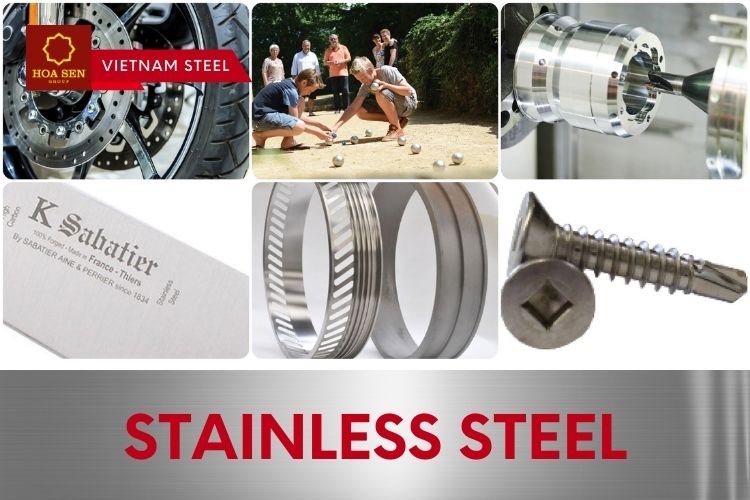
In summary, galvanized steel is widely employed in applications where corrosion resistance is required, and aesthetics are of lesser concern. Its applications encompass a wide range of industries, including construction, automotive, signage, and infrastructure, ensuring durability and long-term protection against environmental elements.
Read More: Painting Galvanized Steel: Step-by-Step Instructions
Vietnam Steel by Hoa Sen Group
